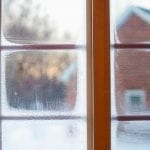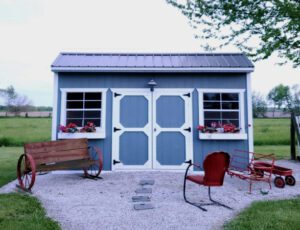
The Facts About Energy-Efficient Windows, Plus Installation How-tos
If you have old, single-pane windows, they’re likely a drain on your energy bill. Installing energy-efficient windows will reduce your heating and cooling bills, plus it’s good for the environment. And you may qualify for a tax credit.
Read on to learn more and find what is best for you –
Why do I need energy-efficient windows?
According to the U.S. Department of Energy, leaky windows cause 25% to 30% of a typical U.S. home’s heating/cooling loss. Also, adding Energy Star qualified windows can save up to $465 a year on your electric heating/cooling bills.
Plus, it’s environmentally friendly – shrinking your home’s carbon footprint and limiting greenhouse gas emissions. Windows that are energy efficient will also pay for themselves over time with the money saved. Other benefits include –
An energy-efficient window will have a warmer interior glass surface, so window condensation and frost will be significantly reduced.
Increased views –
Windows with a single pane are known to cause solar heat gain. The usual solutions to help limit the heat include installing tinted window glazing or window shades. These options partially block your view of the outdoors and reduce incoming light.
New window glazes that contain Low-E (spectrally selective) coatings will reduce solar heat gain. This option works better than tinted glass and shades because there is minimal light loss, providing you with a clear and unobstructed view.
Reduce fading of indoor furnishings –
Modern home furnishings and accessories such as carpeting, upholstery fabric, wallpaper, curtains, and artwork may fade when routinely exposed to UV rays and sunlight. New glass coatings can reduce UV exposure by 75%. New UV absorbers can be added to multilayer windows or laminated glass.
In most cases, the light transmission will be less than 1%.
Reduce fading and deterioration of your home furnishings by choosing one of the below:
- Low-E coated glass
- The applied film, or
- Windows that incorporate plastic layers
Fewer HVAC costs –
Energy-efficient windows help reduce annual heating and cooling bills. Plus, they’ll reduce your home’s peak load times, too. (A peak load is a maximum requirement for heating or cooling at a specific time during the day.
Learn more about the benefits of energy efficient windows here.
Can I replace the old windows myself?
Replacing an existing window isn’t just taking the old one out and popping a new one in.
The steps required to install energy-efficient windows will vary depending on the type of window (wood-frame, aluminum-frame) you’ve purchased and your home’s exterior– stucco, wood, siding, brick, etc.
Installing new windows is something that you want to get right. If the windows are installed incorrectly, you may have problems later if you decide to sell. In addition, most city and local governments require a building permit for new window installation.
Replacing old windows with energy-efficient windows –
If you’ve decided to replace your old windows with energy efficient ones yourself, here are a few things to keep in mind –
First, you’ll need a building permit which may involve drawing and submitting plans. Or, your local building permit department may have a plan you can use.
After installation, a licensed building inspector will visit your home to verify that the windows have been installed correctly – according to residential codes. (If you’ve read this far and find the process daunting, we suggest hiring a contractor.)
An alternative to window replacement – install thermal pane windows
Proper installation is essential to achieve the best window performance and energy efficiency. Make sure your windows fit snugly to stop water leakage. And read the window manufacturer’s installation manual.
Installing thermal pane windows over existing windows –
What you’ll need:
- Mask
- Work gloves
- A hand planer
- Rags
- Caulk
- Glass cleaner
- Put on the mask and work gloves.
- Prep the work area – Remove all window treatments – curtains, blinds, valance, etc.
- Clean existing windows with glass cleaner and a clean, lint-free rag. Scrape off any dried-on paint splatters.
- Do a test run – slide the thermal pane window inside the opening, checking for a snug fit. If the window is too large, adjustments will need to be made. For wood sills, use a hand planer to widen the opening.
- Recheck the fit and continue sanding if needed.
- Apply silicone caulk to the inside edge of the existing window.
- Install the thermal pane window by sliding it upright.
- Nail the flange to the sides of the existing window. Check the thermal pane window, making sure it opens and closes smoothly.
- Hide any exposed nails by adding window trim. Touch up any bare wood spots with exterior paint.
Other ways to improve the efficiency of your existing windows –
If your current windows are in good shape, you can increase energy efficiency, improve indoor comfort, and save money by:
- Checking windows for air leaks – add caulk or weather-stripping to help as needed.
- Install sun-blocking curtains, window treatments, or shades.
- Add storm windows or panels.
- Applying UV-blocking solar film to the window glass
- Install exterior shades such as awnings or overhangs.
- Install exterior roll-down shades or sails on covered porches and decks.
Note: After increasing your energy efficiency is complete, recheck windows for air leaks.
Do energy-efficient windows qualify for a tax credit or rebate?
Yes, most Energy Star-qualified windows do. Tax credits are offered by state or local governments or by the IRS. It’s the benefit of buying certain energy efficient products. Your benefit is seen as a reduction of income tax owed or an increase in your tax refund.
Pro tip – A state tax credit can often be combined with a federal tax credit for even more energy savings.
The Energy Star Rebate Finder will help you save and find rebates on Energy Star-certified products near you. To find local rebates, visit the site and type in your zip code– the next screen will allow you to filter rebates by product type.
Adding windows that are energy efficient to your home may seem expensive, but the money you save will cover the initial investment.
Also, your family will be more comfortable. And you may be pleasantly surprised when you open next month’s energy bill.
Interesting in more exterior home improvement tips? Visit here.
Read more information about energy efficient window care here.













